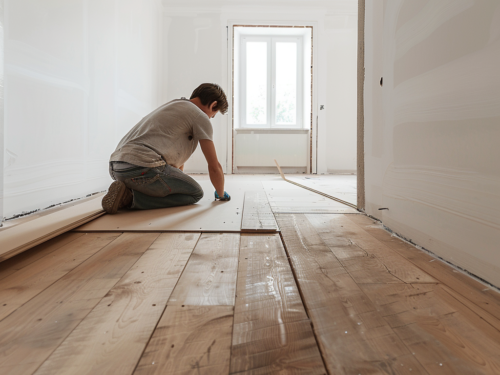
Common Mistakes to Avoid When Installing Wood Floors
Installing wood floors can transform the look and feel of your home, adding warmth, beauty, and value. However, improper installation can lead to expensive repairs and long-term damage. Avoiding certain common mistakes can help ensure a smooth installation process and long-lasting results. In this post, we’ll explore the most frequent mistakes homeowners make when installing wood floors and how to prevent them.
1. Skipping the Acclimation Process
One of the most critical steps in wood floor installation is acclimating the wood to the environment where it will be installed. Wood naturally expands and contracts based on humidity and temperature. If the flooring isn’t given time to adjust to the room’s conditions, it could lead to gapping, warping, or buckling after installation.
Solution: Place the wood planks in the room where they’ll be installed for at least 48-72 hours. This will allow the wood to reach equilibrium with the space’s moisture levels.
2. Failing to Check for Moisture
Moisture is a wood floor’s worst enemy. Installing wood flooring over a damp or improperly prepared subfloor can result in significant damage. Moisture can cause the wood to swell, warp, or even rot over time.
Solution: Use a moisture meter to check the moisture levels of the subfloor and the wood before installation. Additionally, consider installing a moisture barrier, especially in moisture-prone areas like basements or bathrooms.
3. Not Preparing the Subfloor Properly
A common mistake in wood floor installation is neglecting to properly prepare the subfloor. An uneven or dirty subfloor can lead to visible imperfections, creaking noises, and even shifting of the wood planks over time.
Solution: Ensure the subfloor is clean, dry, and level. If necessary, sand or use a self-leveling compound to address any unevenness. Cleaning away debris and dust will also help the wood planks adhere better during installation.
4. Incorrectly Spacing Expansion Gaps
Wood floors need room to expand and contract with changing humidity levels. Without proper expansion gaps along the perimeter of the room, the wood could buckle or warp.
Solution: Always leave an expansion gap of at least 1/4 to 1/2 inch between the flooring and the walls. This allows the wood to move naturally without causing damage.
5. Using the Wrong Tools
Installing wood floors requires specific tools, and using the wrong ones can result in uneven boards, cracked wood, or even injury. Common mistakes include using incorrect nail sizes, improper adhesives, or lacking specialized installation tools like a floor nailer.
Solution: Invest in or rent the proper tools for wood floor installation. Consult with professionals or read the manufacturer’s guidelines to ensure you’re using the right products and methods.
6. Neglecting to Stagger Planks
Another common installation mistake is failing to stagger the wood planks properly. When planks aren’t staggered, the floor can appear too uniform, and the joints can align, weakening the overall structure.
Solution: Stagger the wood planks during installation so that the joints don’t align in consecutive rows. This not only improves the appearance but also strengthens the floor’s integrity.
7. Rushing the Installation
Installing wood floors is a time-consuming process, and rushing through it can lead to costly errors. Some homeowners may try to speed up the installation, skipping steps or making poor cuts.
Solution: Take your time during the installation process. Measure twice, cut once, and follow the correct procedures to ensure the floor is installed properly.
By avoiding these common wood floor installation mistakes, you can ensure a smoother process and a beautiful, durable floor that lasts for years to come. Whether you choose to install the floor yourself or hire a professional, understanding these potential pitfalls will help you make informed decisions and achieve the best possible results.


